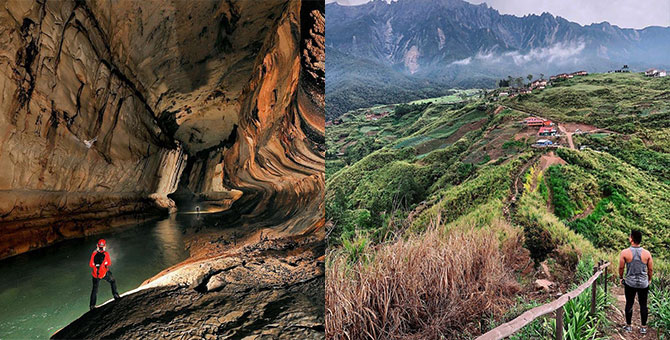Malaysia is widely known for its diverse culture and remarkable heritage, owing to the country’s unique historical and geographical context. In fact, the United Nations Educational, Scientific, and Cultural Organisation, also known as UNESCO, has recognised four World Heritage Sites in Malaysia for their irreplaceable value to mankind.
Of the four, two are recognised as cultural sites and the other two as natural sites. The recognition of these sites bears great significance as UNESCO adheres to strict selection criteria, resulting in only 1,154 World Heritage Sites in the world today. Sites can also be delisted if they do not maintain integrity in their management plans.
Not only do these four World Heritage Sites make up an important part of Malaysia’s DNA, they also offer amazing sights and features that you should experience at least once in your life. How many have you visited?
1. Kinabalu Park
Kinabalu Park was established in 1974 as one of Malaysia’s first national parks, earning a spot on the UNESCO World Heritage Site list in 2000. Sprawled across 75,370 hectares of tropical rainforest in Sabah—93 per cent of which is still untouched—it is home to three of the tallest mountains in the country, namely Mount Kinabalu (4,095m), Mount Trusmadi (2,642m), and Mount Tambuyukon (2,579m). Aside from breath-taking mountainside views, nature lovers stand to discover more than 1,000 species of orchids, 78 species of Ficus, 60 species of ferns, and 326 species of birds in the park’s flourishing ecosystem.
What’s more, the park and its surrounding three districts are collectively on track to be recognised as a UNESCO Global Geopark site, forming a single unified geographical area that’s “managed with a holistic concept of protection, education, and sustainable development.”
RELATED: Must-visit natural treasures in Sabah and where to stay while you’re there
2. Gunung Mulu National Park
Inscribed as a natural UNESCO World Heritage Site in 2000, Gunung Mulu National Park is the most studied tropical karst area in the world. The park spans a massive 52,864 hectares and is famous for its impressive biodiversity and karst limestone features. It boasts at least 295km of explored caves, which is home to millions of swiftlets, bats, and the Sarawak Chamber—the largest known cave chamber in the world.
One of its most distinctive features is the dramatic white limestone pinnacles at Mount Api, formed over 1.5 million years ago. Fun fact: these are the very same rock formations found on the RM100 banknote! Plus, there are seventeen vegetation zones in the park supporting an abundance of flora and fauna. Needless to say, visitors are sure to be awed by the exceptional natural beauty of the ra
| SHARE THE STORY | |
| Explore More |




